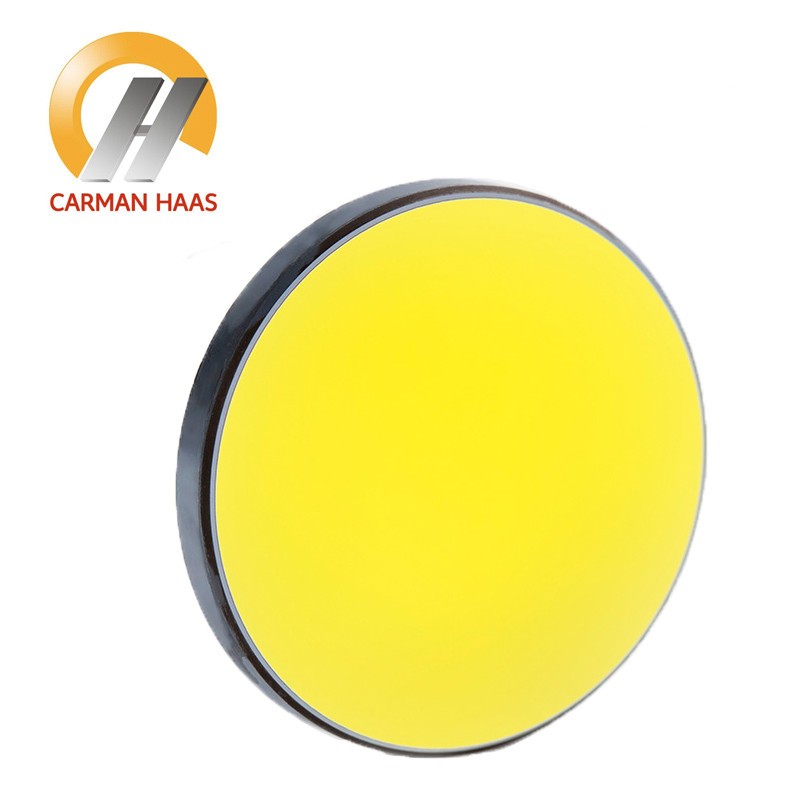CO2 laser cutting can be applied to cut almost all metal or non-metal materials. The optical system includes laser resonator cavity optical system (including rear mirror, output coupler, reflecting mirror and polarization Brewster mirrors) and outside beam delivery optical system( including reflecting mirror for optical beam path deflection, reflecting mirror for all kinds of polarization processing, beam combiner/beam splitter, and focusing lens).
Carmanhaas reflector mirror have two material:Silicon (Si) and Molybdenum (Mo). Si Mirror is the most commonly used mirror substrate; its advantage are low cost, good durability, and thermal stability. Mo mirror (Metal Mirror) extremely tough surface makes it ideal for the most demanding physical environments. Mo mirror is normally offered uncoated.
Carmanhaas reflector mirror is widely used in the following brands CO2 laser engraving & cutting machines.
1. High reflecting rate, better effect in cutting and engraving, bearable for high power density, and strong thin – film coating against peeling off and durable for wiping.
2. The cutting & engraving speed of some applications improved, and the ability for reflected light enhanced.
3.More bearable for wiping, longer life span as well as better process to radioactive coating.
| Specifications | Standards |
| Dimensional Tolerance | +0.000” / -0.005” |
| Thickness Tolerance | ±0.010” |
| Parallelism : (Plano) | ≤ 3 arc minutes |
| Clear Aperture (polished) | 90% of diameter |
| Surface Figure @ 0.63um | Power: 2 fringes, Irregularity: 1 fringe |
| Scratch-Dig | 10-5 |
|
Diameter (mm) |
ET (mm) |
Material |
Coating |
|
19/20 |
3 |
Silicon |
Gold coating@10.6um |
|
25/25.4 |
3 |
||
|
28 |
8 |
||
|
30 |
3/4 |
||
|
38.1 |
3/4/8 |
||
|
44.45 |
9.525 |
||
|
50.8 |
5/5.1 |
||
|
50.8 |
9.525 |
||
|
76.2 |
6.35 |
||
|
18/19 |
3 |
Mo |
Uncoated |
|
20/25 |
3 |
||
|
28 |
8 |
||
|
30 |
3/6 |
||
|
38.1/40 |
3 |
||
|
50.8 |
5.08 |
Great care should be taken when handling infrared optics. Please note the following precautions:
1. Always wear powder-free finger cots or rubber/latex gloves when handling optics. Dirt and oil from the skin can severely contaminate optics, causing a major degradation in performance.
2. Do not use any tools to manipulate optics — this includes tweezers or picks.
3. Always place optics on supplied lens tissue for protection.
4. Never place optics on a hard or rough surface. Infrared optics can be easily scratched.
5. Bare gold or bare copper should never be cleaned or touched.
6. All materials used for infrared optics are fragile, whether single crystal or polycrystalline, large or fine grained. They are not as strong as glass and will not withstand procedures normally used on glass optics.





